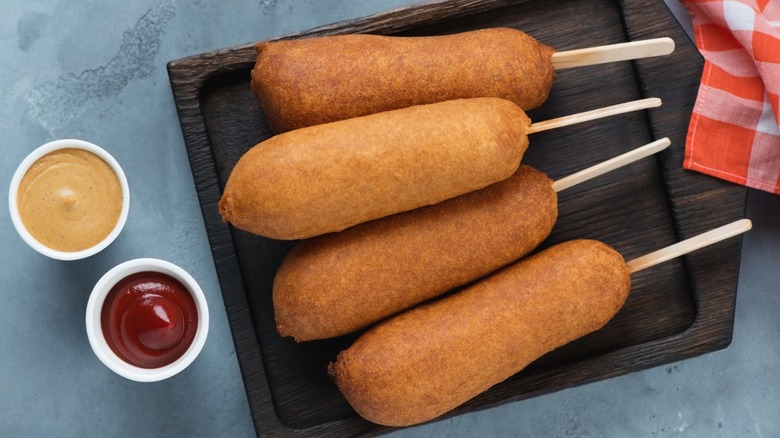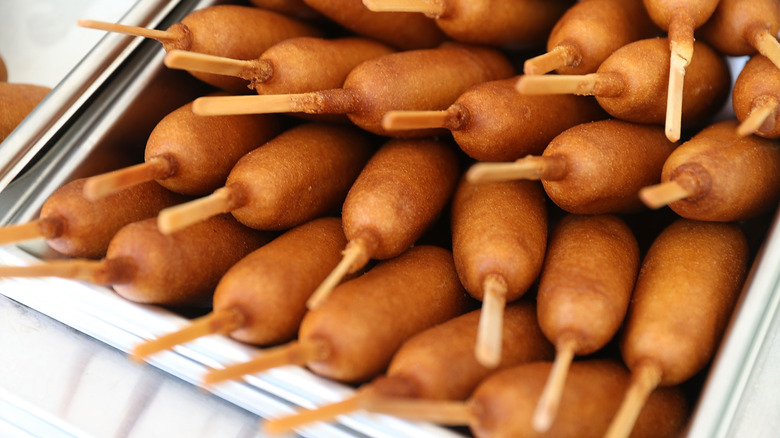The Real Reason Corn Dogs Are Served On A Stick
Whenever we go to the state fair, it seems like they serve pretty much all the food on a stick — Twinkies, fried Oreos, entire turkey legs, pickles, sandwiches, you name it, it's probably on a stick and maybe even deep-fried. But how did the "food on a stick" trend get started? State fairs actually started in Syracuse, New York, in 1841 as a way for farmers to get together (via Smithsonian). These agricultural affairs brought farming families together to share skills and celebrate bountiful harvests.
They provided a place to show off all sorts of their products, which were usually an array of vegetables (the more impressive the better) and livestock. Since then, the outline of a state fair has changed a lot, though a lot of the same basic principles remain. People still gather to show off their crafts, wares, homegrown produce, and livestock. One thing that is vastly different, however, is the food offerings.
Corn dogs were first introduced to state fairs in the 1940s
According to The Daily Meal, "You can trace America's anything-on-a-stick obsession back to July 5, 1927, when a U.S. inventor named Stanley S. Jenkins filed a patent for a 'Combined Dipping, Cooking, and Article Holding Apparatus.'" This patent was the beginning of foods dipped in batter and served on a stick, and it really took off. The corn dog was first introduced to the public in the 1940s and quickly became the most popular item on a stick.
The outlet reported that "Fletcher's Corny Dogs at the Texas State Fair and Cozy Dog at the Illinois State Fair were two of the most popular corn dog stands of the time," and their fame spread from there. They quickly became popular, with different franchises like Pronto Pups opening up around the country, expanding the corn dog to more than just fair food (via MPR News). What we have today is a deliciously sweet and savory snack that's found all over the place.

